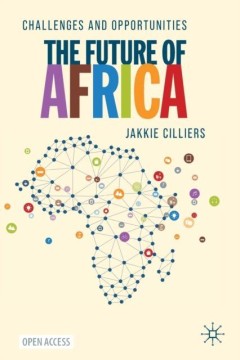Filter by

Study on the National Conditions of Modernization with Chinese Characteristics
This is an open access book. Based on the analysis of China’s basic national conditions and development trends, this book begins with a general introduction to the study of “modernization with Chinese characteristics,” and then discusses the comprehensive construction of a prosperous society in all respects, unprecedented changes, the new national system, green modernization, and technol…
- Edition
- -
- ISBN/ISSN
- 978-981-97-7447-0
- Collation
- XVI, 364
- Series Title
- -
- Call Number
- -

Political Leadership and Agricultural Transformation = A New Research Agenda
This open access book examines the impact of political leadership on agricultural transformation to understand why cases of successful agricultural transformation are so rare in the developing world. It highlights the importance of leadership and its interaction with the socio-political system as a key factor impacting agricultural transformation. The book takes a first step in systematically e…
- Edition
- 1
- ISBN/ISSN
- 9783031698521
- Collation
- XV, 84 hlm; ill., lamp.,
- Series Title
- -
- Call Number
- -

The Future of Africa = Challenges and Opportunities
This open access textbook offers a critical introduction to human and economic development prospects in Africa revolving around three questions: where is Africa today, what explains the current state, and, given historical trends and what we know about the world, where do we think the continent will be in 2040? And, a final question: what can we do to create a better tomorrow? It models ambitio…
- Edition
- 1
- ISBN/ISSN
- 9783030465902
- Collation
- XVII, 421 hlm; ill., lamp.,
- Series Title
- -
- Call Number
- -

Modernization with Chinese Characteristics and Great Power
This open access book expounds in detail on the profound meaning and main characteristics of modernization with Chinese characteristics. This was done utilizing tools of historical investigation and fact-based research on the modernization of New China. The author provides a far-reaching outlook of the strategic goals and future trends of modernization with Chinese characteristics. In this book…
- Edition
- 1
- ISBN/ISSN
- 9789819933976
- Collation
- VI, 201 hlm; ill., lamp.,
- Series Title
- -
- Call Number
- -

Study on the National Conditions of Modernization with Chinese Characteristics
Based on the analysis of China’s basic national conditions and development trends, this book begins with a general introduction to the study of “modernization with Chinese characteristics,” and then discusses the comprehensive construction of a prosperous society in all respects, unprecedented changes, the new national system, green modernization, and technological modernization. In addit…
- Edition
- 1
- ISBN/ISSN
- 9789819774470
- Collation
- XVI, 364 hlm; ill., lamp.,
- Series Title
- -
- Call Number
- -

Money and Debt: The Public Role of Banks
This Open Access book from the Netherlands Scientific Council for Government Policy explains how money creation and banking works, describes the main problems of the current monetary and financial system and discusses several reform options. This book systematically evaluates proposals for fundamental monetary reform, including ideas to separate money and credit by breaking up banks, introducin…
- Edition
- 1
- ISBN/ISSN
- 9783030702502
- Collation
- XII, 247 hlm,: ill, lamp;
- Series Title
- -
- Call Number
- -

Megatrends in Agriculture, Food Industry and Food Markets : An Empirical and …
This book offers a research-based, holistic overview of the entire value chain of the global food industry. It captures and defines over 80 contemporary ‘megatrends’ in agriculture and the food market that can be empirically documented and have a major impact on business, economies, industries, societies, and individuals. Today the world is characterized by more uncertainty and unpredict…
- Edition
- 1
- ISBN/ISSN
- 9783031581526
- Collation
- XLV, 410 hlm; ill., lamp.,
- Series Title
- -
- Call Number
- -

Roadblocks to the Socialist Modernization Path and Transition
This open access book examines how different economic systems impacted the development of East Germany and Poland. Through comparing these countries while they were centrally planned socialist economies with the periods when they transitioned to capitalism, the inability of socialist economies to modernize effectively and produce sustained economic growth is highlighted. Particular attention is…
- Edition
- -
- ISBN/ISSN
- 978-3-031-37049-6
- Collation
- XVI, 331
- Series Title
- -
- Call Number
- -

The Economic System of the Early Islamic Period
This book provides an economic analysis of the earliest Islamic society, focusing on the policies of the Messenger of Islam (Sawa) and his successors during the first four formative decades of Islam. Two institutions of great importance – the market and the public treasury (Baitul Mal) – and their roles in the development of the private and public sectors are particularly emphasized in this…
- Edition
- 1
- ISBN/ISSN
- 978-1-137-50733-4
- Collation
- XXI, 311, 41 illustrations in colour
- Series Title
- Political Economy of Islam
- Call Number
- -

Towards a General Theory of Deep Downturns Presidential Address from the 17t…
Joseph Stiglitz examines the theory behind the economic downturns that have plagued our world in recent times. This fascinating three-part lecture acknowledges the failure of economic models to successfully predict the 2008 crisis and explores alternative models which, if adopted, could potentially restore a stable and prosperous economy.
- Edition
- -
- ISBN/ISSN
- 978-1-137-58691-9
- Collation
- -
- Series Title
- -
- Call Number
- -
 Computer Science, Information & General Works
Computer Science, Information & General Works  Philosophy & Psychology
Philosophy & Psychology  Religion
Religion  Social Sciences
Social Sciences  Language
Language  Pure Science
Pure Science  Applied Sciences
Applied Sciences  Art & Recreation
Art & Recreation  Literature
Literature  History & Geography
History & Geography